OLED displays use organic materials that emit light when electricity is applied. OLEDs enable emissive, bright, thin, flexible and efficient displays. OLEDs are set to replace LCDs in all display applications - from small displays to large TV sets.
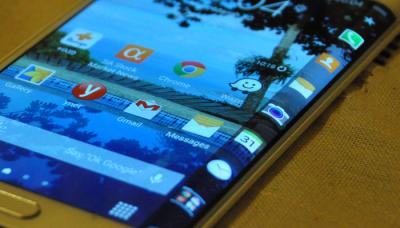
Samsung's Super-AMOLED displays, announced in January 2010, are AMOLED displays for mobile devices (such as smartphones, wearables and tablets) with an integrated touch function. The thickness of the touch sensor is just 0.001 mm and this allows the screen to provide better images and to have great visibility even in direct sunlight compared with regular AMOLED displays with an external touch layer.
Super AMOLED and the PenTile matrix
Samsung's Super-AMOLED displays use a Pentile matrix sub-pixel design. That means that the green sub-pixel is shared by two pixels and the display has only 2 sub-pixels per real 'pixel' compared to the classic RGB matrix design (or Real-Stripe). You can see a PenTile matrix vs a Real-Stripe one on the images below (the PenTile is on the right). Newer Super AMOLED displays use a different PenTile matrix (Diamond Pixel pattern).
Super AMOLED vs Dynamic AMOLED
In 2019 Samsung introduced its next-generation mobile display technology, which it calls Dynamic AMOLED. Basically a Dynamic AMOLED is similar to a Super-AMOLED display, but it adds HDR support. It seems as if Samsung is no longer using the Dynamic AMOLED brand for its latest displays.
Further reading
The latest Super AMOLED news:
The Galaxy Note 4 has a 5.7" QHD Super AMOLED display, and a curved-edge variant!
As expected, Samsung announced the Galaxy Note 4, and the display is indeed a QHD (2560x1440) Super AMOLED panel. The exciting news (which I did not expect) is the Galaxy Note 4 Edge - the curved edge variant!
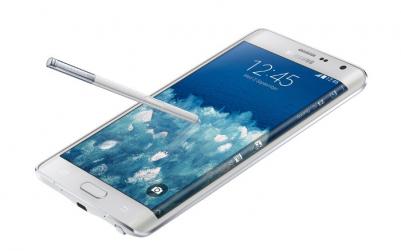
So first of all - you can see the Galaxy Note 4 Edge above. It sports a 5.6" QHD (2560x1440) display, with an extra 160-pixels on the right edge (Samsung calls this QHD+). The bent edge (besides being unique and probably very cool) can show notifications, application icons or simply controls when you want the full screen to show a video for example.
New leak confirms a 5.7" QHD Super AMOLED for the Galaxy Note 4
Samsung is set to release the Galaxy Note 4 mobile phone on September 3rd, and a new leak from Indonesia confirms previous reports saying that this new phone will sport a 5.7" QHD Super AMOLED display.

Some reports suggested that Samsung may release two Note 4 variants, one with a regular display and one with a curved one. A senior VP at Samsung Electronics even said that the Note 4 will have a "new form factor".
UDC says new red emitter material increases power efficiency dramatically
When Samsung launched the Galaxy S5, DisplayMate tested the new display (a 5.1" FHD, 432 PPI, Super AMOLED) and found it to not only be the best mobile display ever tested at Displaymate, but also 27% more efficient than the 5" Full-HD one on the GS4. Samsung told DisplayMate that the improvement mostly came from more efficient OLED materials, but they never told us which materials exactly.
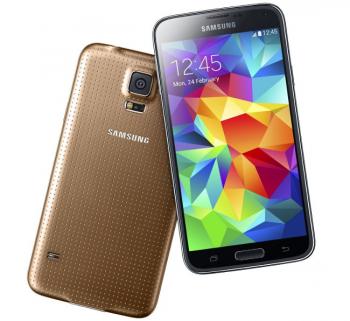
During a recent investors conference, Universal Display revealed that the GS5 uses their new red emitter material, and the company says that "Samsung attributes the increase in power efficiency" to the new emitter. This is rather surprising as I wouldn't have thought a new red emitter can effect the power efficiency of the whole display so dramatically.
Samsung's new 5.1" QHD AMOLED is more efficient than the 5.1" FHD, was a new emitter adopted?
A couple of months ago, Samsung release the Galaxy S5 LTE-A, that sports the company's latest AMOLED panel - a 5.1" QHD (2560x1440) Super AMOLED. Anandtech posted a long review of this new phone, and they find that the display is actually a little bit more efficient than the 5.1" FHD panel used in the GS5, even though it sports a higher resolution (which usually means a less efficient display as the aperture ratio gets smaller.
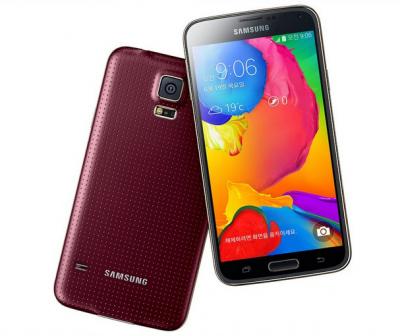
Anandtech further says that Samsung told them they switched to a new, improved emitter material for the new QHD panel, which explains the increased efficiency. This is interesting as the QHD display was released only a few months after Samsung started producing the FHD panel, which by itself was 27% more efficient than the previous generation panels - also due to more efficient OLED materials.
Samsung to announce the Galaxy Note 4 on September 3rd, what should we expect?
Samsung just sent press invitation to their Unpacked 2014 Episode 2 event, which will take place on September 3rd. It's highly likely that the Galaxy Note 4 will be announced during the event (they even say "note the date").

As always before a major Samsung launch, we heard several reports (rumors?) regarding this device. Last month SamMobile claimed to have exclusive info detailing a QHD (2560x1440) AMOLED panel. On the same day, the Korea Times reported that Samsung will actually unveil two Note 4 variants - on with a regular flat display, and another with a curved one. A month earlier, a senior VP at Samsung Electronics said that the Note 4 will have a "new form factor".
Oculus' DK2 uses the Galaxy Note 3 AMOLED panel, overclocked for lower persistence
Last month Oculus started to ship their second-gen (DK2) development kits - for over 40,000 pre-order customers. Those Gen-2 devices switched the 7" LCD used in the first-generation headsets to newer AMOLED panels. Back when they unveiled the DK2, Oculus explained that they wanted a low persistence display, as it makes an incredible difference. Oculus said that their OLED runs much faster than any other OLED panel on the market.
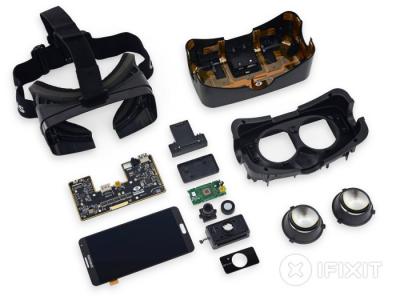
It was always assumed the panel maker was SDC (they even announced a co-development effort later on), but the actual display was unknown. Today iFixit posted a teardown of the DK2, and it turns out that the display is the same 5.7" FHD Super AMOLED panel used in the Galaxy Note 3 (you can see it in the lower-left part of the image above). In fact, Oculus uses the exact module, with the touch-controller in tact and the camera holes and all.
OLEDNet: it's highly likely that AUO is supplying AMOLED panels to Gionee
OLEDNet posted an interesting article saying that Gionee's upcoming GN9005 ultra-slim smartphone uses a 4.8" HD AMOLED Panel (306 PPI) made by AU Optronics. OLEDNet says that the fact that this panel is called "AMOLED" and not "Super AMOLED" like SDC's panels is a hint, and in addition, it is a low-performance panel compared to the SDC-made 5" FHD 441 PPI panel Gionee used in their previous phone (the Elife S5.5).

I'm not sure I'm convinced - this panel could still be made by SDC, even if it does not specifically use the Super AMOLED brand (this is up to Gionee I believe to decide). But OLEDNet says that according to their information, AUO started supplying AMOLED Panels to a Chinese maker last month.
DisplayMate: the OLED displays in Samsung's new tablets are the best tablet displays ever tested
DisplayMate posted yet another interesting display shoot-out, this one testing Samsung's new QHD (2560x1600) Super AMOLED displays used in the upcoming Galaxy Tab S (8.4 and 10.5) tablets. As these displays are very similar to the GS5 display, it's not surprising that DisplayMate found those tablets to offer the best performing displays ever. This is yet another testimony to how great OLED displays are - and the rate of improvement in OLEDs is very rapid.
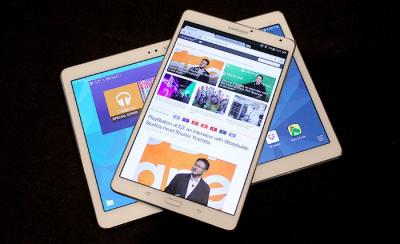
As DisplayMate found out, the Galaxy Tab S establishes new records for best Tablet display performance in: Highest Color Accuracy, Infinite Contrast Ratio, Lowest Screen Reflectance, and smallest Brightness Variation with Viewing Angle. These are also the highest resolution tablets at QHD.
Samsung announced a GS5 variant with a 5.1" QHD (577 PPI) Super AMOLED
In January 2014, SDC confirmed that it is developing a QHD (2560x1440) AMOLED panel. Today the company announced a new phone for the Korean market, the Galaxy S5 LTE-A which sports this new 5.1" QHD panel. This panel reaches a very high PPI (577) which makes it the world's highest density AMOLED, and probably the highest density mobile display (beating LG's G3 display which is a 5.5" QHD LCD, 538 PPI).

We don't know much about this display, but it probably uses some kind of Pentile display (or Diamond Pixel like the GS5). While this phone will probably be exclusive for Korea (it will be released via SK Telecom later this summer), hopefully Samsung will also release a similar upgraded GS5 phone with a QHD panel worldwide. It's also likely that the Note 4 will sport a QHD panel too. Samsung, by the way, does not plan to stop QHD. The company is actually developing a UHD mobile display - that will reach 870 PPI (!).
You can pre-order Samsung's Galaxy Tab S AMOLED tablets, will ship on June 26
Last week Samsung launched their new AMOLED tablets (the Galaxy Tab S 8.4 and Galaxy Tab S 10.5) - and today it turns out that you can already pre-order the tablets on Amazon.com. Both tablets will ship on June 26, sooner than expected. The Galaxy Tab S 8.4 costs $399.99 while the larger Tab S 10.5 costs $499.99.

Those two tablets have pretty much the same technical specifications: a WQXGA (2560x1600) Super AMOLED display (359 PPI on the 8.4", 287 PPI on the 10.5"), Android 4.4, a 1.9 Ghz Octa-Core CPU (2.3Ghz quad-core in some markets), 8MP camera, 3GB of RAM and 16/32 GB storage and a micro SD slot. Both tablets are only 6.6 mm thick, and the 8.4 has a 4,900 mAh battery while the 10.5 one has a larger 7,900 mAh battery.
Pagination
- Previous page
- Page 6
- Next page



